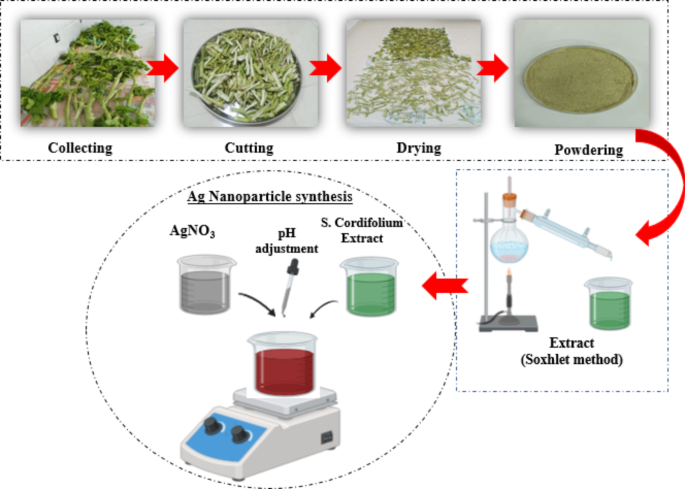Researchers have developed a novel method to detect ammonia, a harmful gas, using silver nanoparticles synthesized from a local plant called Smyrnium cordifolium. This eco-friendly approach provides a simple, sensitive, and cost-effective way to monitor ammonia levels in the environment. The study not only demonstrates the potential of green nanotechnology but also highlights the untapped medicinal properties of this lesser-known plant. Ammonia is a widespread industrial chemical with significant environmental and health impacts, making this development an important step towards better environmental monitoring and protection.

Harnessing the Power of Plants for Nanomaterial Synthesis
Nanotechnology has revolutionized various fields, from medicine to catalysis, but traditional methods of nanoparticle synthesis can be complex and environmentally harmful. In recent years, researchers have turned to nature for inspiration, exploring the potential of green synthesis – the use of plant extracts to produce nanomaterials in a sustainable and eco-friendly manner.
In this study, a team of scientists from Iran has harnessed the power of a local plant, Smyrnium cordifolium, to synthesize silver nanoparticles (AgNPs). These nanoparticles possess unique optical properties that make them suitable for a wide range of applications, including colorimetric detection of chemicals like ammonia.
Discovering the Hidden Potential of Smyrnium cordifolium
Smyrnium cordifolium, also known as “Vanegi,” is a lesser-known plant that is native to Iran. While it has been used in traditional medicine, its full potential has not been extensively explored. The researchers conducted a detailed analysis of the plant’s extract, revealing the presence of a diverse array of bioactive compounds, including phenolic acids, flavonoids, and terpenoids.
These phytochemicals play a crucial role in the green synthesis of silver nanoparticles, acting as both reducing and stabilizing agents. The team optimized the synthesis process by carefully tuning parameters such as silver nitrate concentration, plant extract volume, pH, and temperature, ultimately achieving the most efficient production of AgNPs.
A Sensitive and Selective Ammonia Sensor
The real power of the synthesized silver nanoparticles lies in their ability to detect ammonia, a gas that is widely used in various industries but poses significant environmental and health risks. When the AgNPs interact with ammonia, a distinct color change occurs, shifting from dark orange to amber. This color transformation is detected using UV-Visible spectroscopy, allowing for a simple, fast, and sensitive method of ammonia quantification.
The researchers validated the performance of their AgNP-based ammonia detection system, demonstrating a linear range from 0.5 to 200 parts per million (ppm), a detection limit of 0.028 ppm, and a recovery rate of 96.3 ± 6.5%. Importantly, the method showed excellent selectivity, with minimal interference from other common cations.
Towards Greener Environmental Monitoring
This study not only showcases the potential of Smyrnium cordifolium as a valuable source of bioactive compounds but also highlights the promise of green nanotechnology for environmental monitoring. The development of a sensitive, selective, and cost-effective ammonia detection method using plant-synthesized silver nanoparticles represents a significant step forward in addressing the challenges of environmental pollution.
As the world continues to grapple with the impact of industrial activities and the need for sustainable solutions, this research serves as a testament to the power of nature-inspired innovation. By harnessing the unique properties of plants, scientists are paving the way for a greener future, where advanced technologies and environmental protection go hand in hand.
Author credit: This article is based on research by Mohammad Amin Rashidi, Shahab Falahi, Somayeh Farhang Dehghan, Homeira Ebrahimzadeh, Hori Ghaneialvar, Rezvan Zendehdel.
For More Related Articles Click Here
